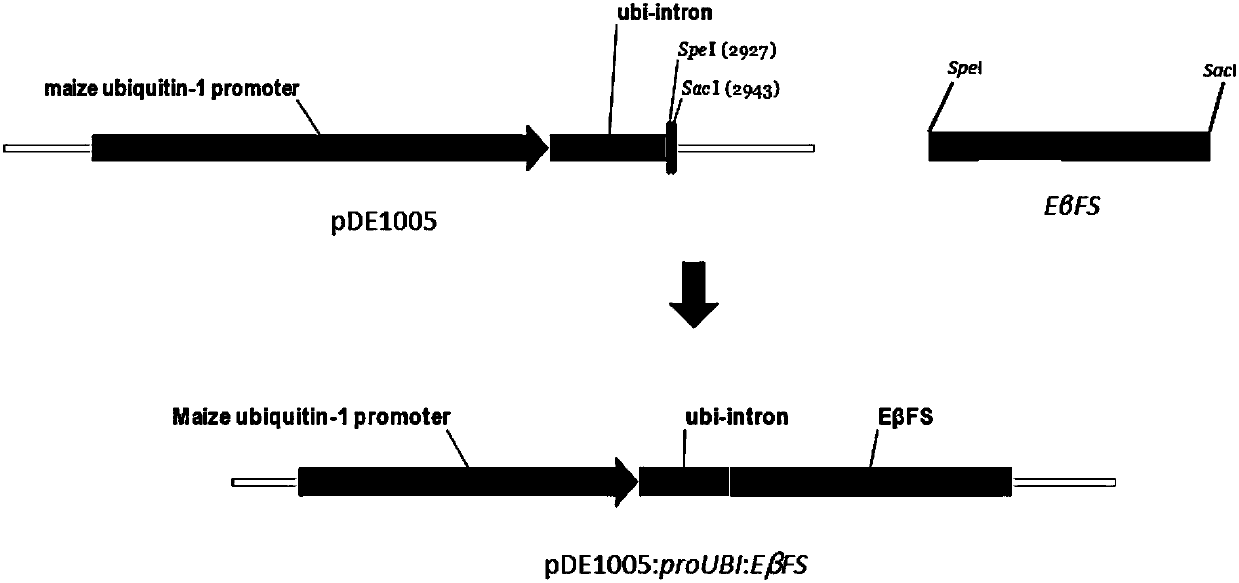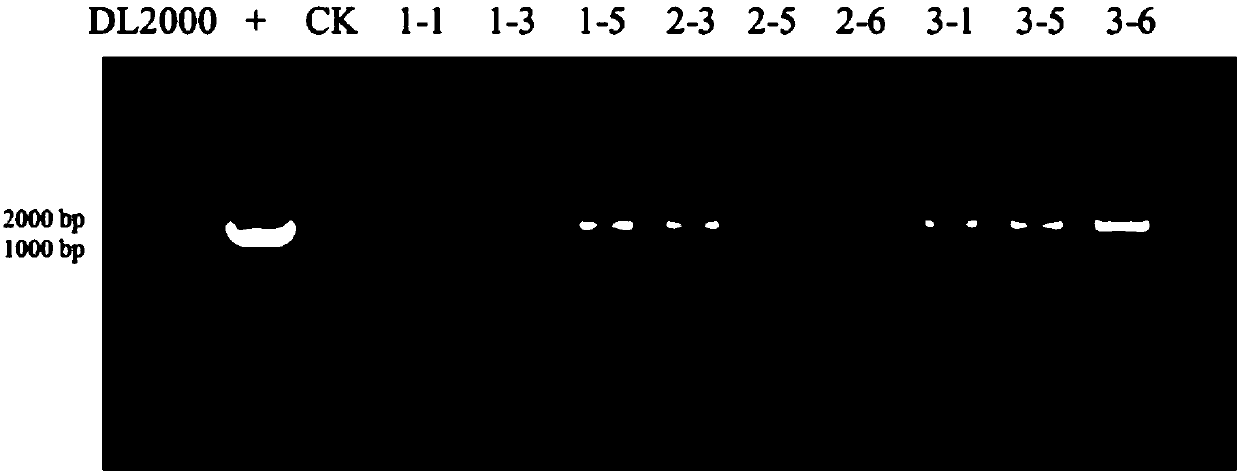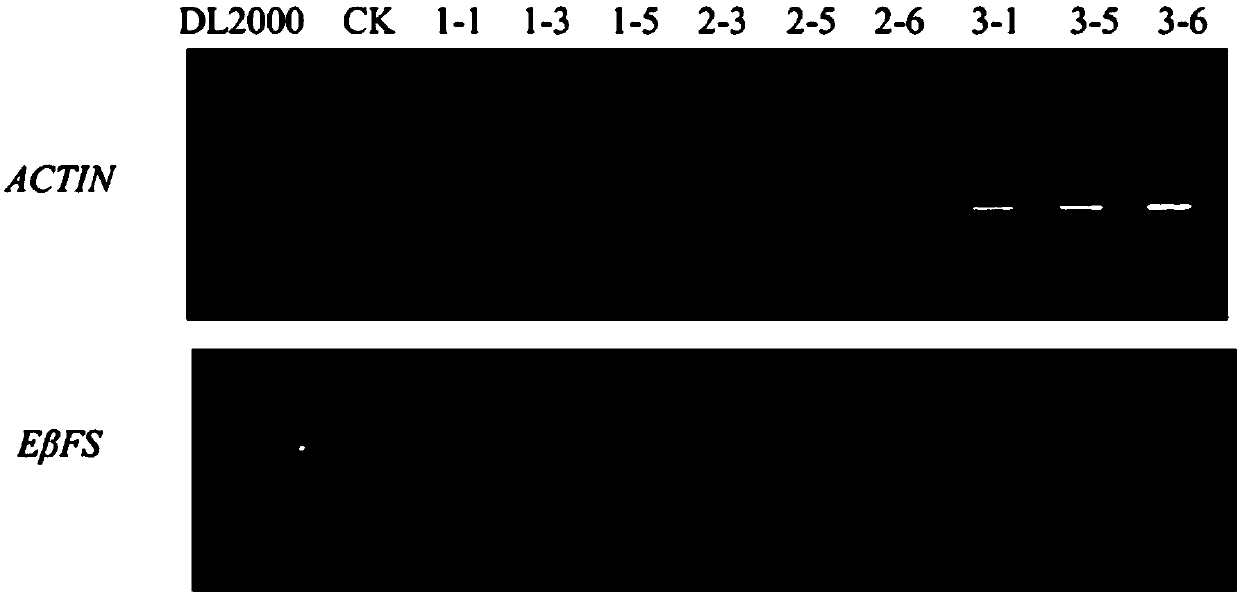Ubiquitin-1 promoter-based plant aphid resistance implementation method
A promoter and plant technology, applied in the field of bioengineering, can solve the problems of easy pollution of the environment by pesticides, and achieve the effect of facilitating promotion and low cost
- Summary
- Abstract
- Description
- Claims
- Application Information
AI Technical Summary
Problems solved by technology
Method used
Image
Examples
Embodiment 1
[0018] Cloning of EβF Gene of Peppermint
[0019] 1. Extraction of total RNA from the peppermint genome: Take the peppermint leaf tissue, grind it in liquid nitrogen, add it to a 1.5mL Eppendorf (EP) centrifuge tube filled with lysate, shake it fully, and follow the instructions of TIANGEN Biochemical Technology Co., Ltd. Total RNA was extracted according to the instructions of the company's plant total RNA kit. The quality of total RNA was identified by agarose gel electrophoresis, and then the RNA content was determined on a spectrophotometer.
[0020] 2. Cloning of the peppermint EβF gene: using the extracted total RNA as a template, cDNA was synthesized under the action of PowerScript reverse transcriptase; gene-specific primers were designed according to the sequence of the EβF gene, and amplified from the total cDNA by PCR EβF gene, and sequenced.
[0021] Through the above steps, the full-length 1650bp of peppermint EβF gene is obtained, its nucleotide coding sequence...
Embodiment 2
[0028] Construction of Plant Overexpression Vector Containing EβF Gene
[0029] The partial sequence of the EβF gene was constructed on the plant overexpression vector (pDE1005) using recombinase. In order to facilitate the construction of the expression vector, the restriction site of SpeI was introduced into the forward primer, and the restriction site of SacI was introduced into the reverse primer. point, the primers are as shown in Table 3, and its promoter is the ubiquitin-1 promoter;
[0030] Table 3 PCR primers constructed by pDE1005-EβF body
[0031]
Embodiment 3
[0033] Obtaining Transgenic Wheat Plants by Transforming Immature Embryos of Wheat with Biolistic Method
[0034] 1. Immature embryo culture: select young ears about 14 days after flowering, collect grains of appropriate size (immature embryo size is 1.0-1.5mm), and disinfect the surface with 70% ethanol for 30 seconds in an ultra-clean workbench, and disinfect with 10% sodium hypochlorite for 10 seconds. -12min, rinsed with sterile water 3 times, gently peeled off the immature embryos, inoculated in SD 2 Callus was induced on culture medium.
[0035] 2. Gene gun transformation of wheat immature embryos: inoculate the immature embryo calli of about 8 days as the recipient of exogenous genes. The plasmid DNA containing the target gene is wrapped with gold powder bullets for transformation. Before the bombardment of the gene gun, the receptors were placed in the hyperosmotic medium (SD 2 +0.4mol L-1 sorbitol) for 4 hours. After the bombardment, the callus was placed on the h...
PUM
 Login to View More
Login to View More Abstract
Description
Claims
Application Information
 Login to View More
Login to View More - R&D
- Intellectual Property
- Life Sciences
- Materials
- Tech Scout
- Unparalleled Data Quality
- Higher Quality Content
- 60% Fewer Hallucinations
Browse by: Latest US Patents, China's latest patents, Technical Efficacy Thesaurus, Application Domain, Technology Topic, Popular Technical Reports.
© 2025 PatSnap. All rights reserved.Legal|Privacy policy|Modern Slavery Act Transparency Statement|Sitemap|About US| Contact US: help@patsnap.com



